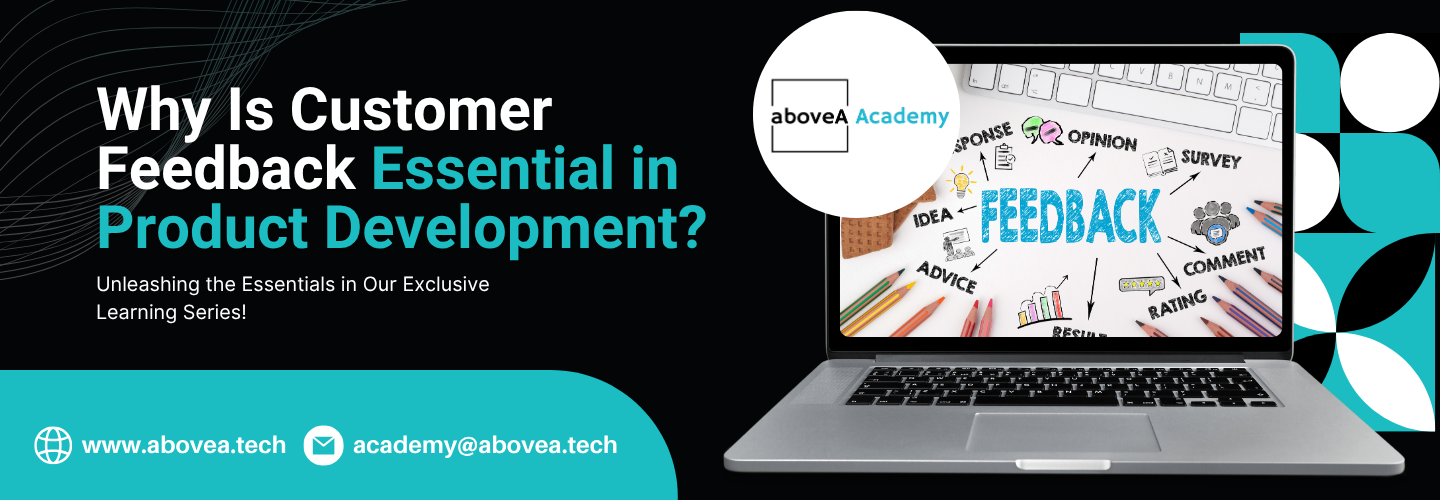
Why Is Customer Feedback Essential in Product Development?
What is Customer Feedback?
Just like any feedback, customer feedback is the information that is shared about the user’s experience when using any product or service. This can be in the form of a written review, a star rating, a complaint to customer service, or even a social media post. Feedback can either be:
- Positive – this feedback reveals what people love.
- Negative – this shows that frustrated or disappointed the users.
- Neutral – neutral means they neither love nor hate. This also means that there’s room for improvement.
Why is Customer Feedback Crucial for Product Development?
When customers share their insights and opinions, they’re literally handing us the guidebook to “how to create a better product”. So, let’s have a look at why customer feedback is so important in each stage of the product development phase.
1.Identify the Problem Early
It’s not a surprise that products at early stages have many problems and issues. And that’s completely normal, no product is perfect right off the bat! Hidden issues like bugs, confusing interfaces, and missing features are often only detected after the user has tested it. Uncovering these issues at an early stage will allow companies to make quick and inexpensive fixes.

2. Saves Time and Resources
Imagine you spent all your time, money, and energy building something that you thought was great, just to find out that you have completely miscalculated. Now you’re left with an empty wallet, a bruised ego, and a shiny new product that absolutely nobody asked for.
So, by gathering and analysing feedback early, teams can :
- Avoid unnecessary features
- Focus only on what matters most
- Speed up development cycles
- And reduce the overall costs
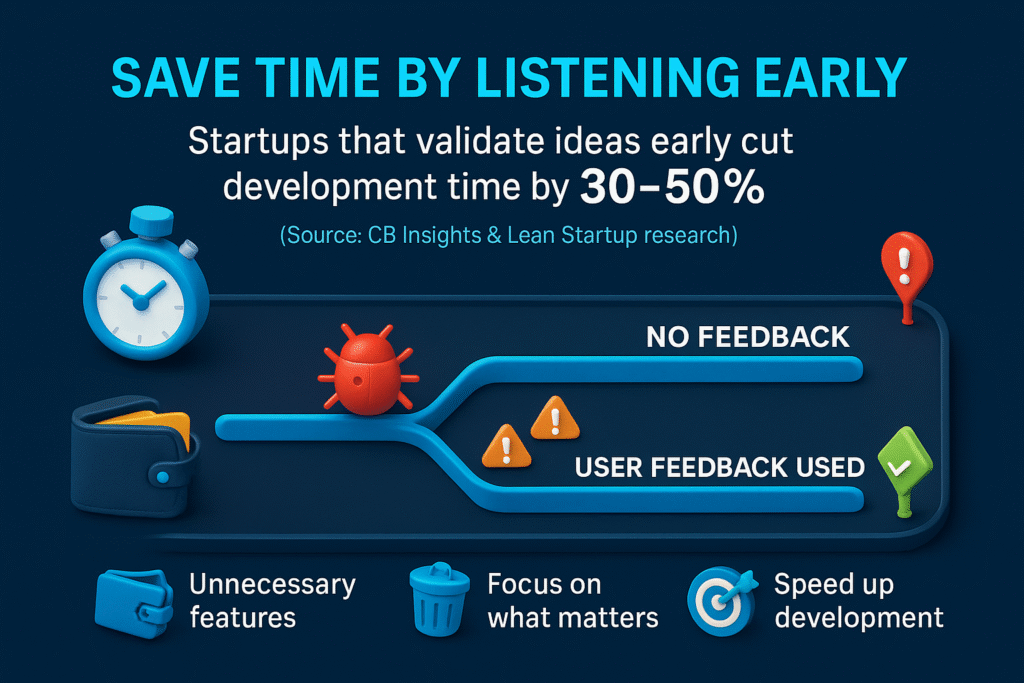
3. Enhance User Experience (UX)
It’s great to have powerful features in your product, but if it’s hard to use, people won’t enjoy it. Customer feedback helps identify pain points like:
- Confusing navigation
- Long loading times
- And unclear instructions
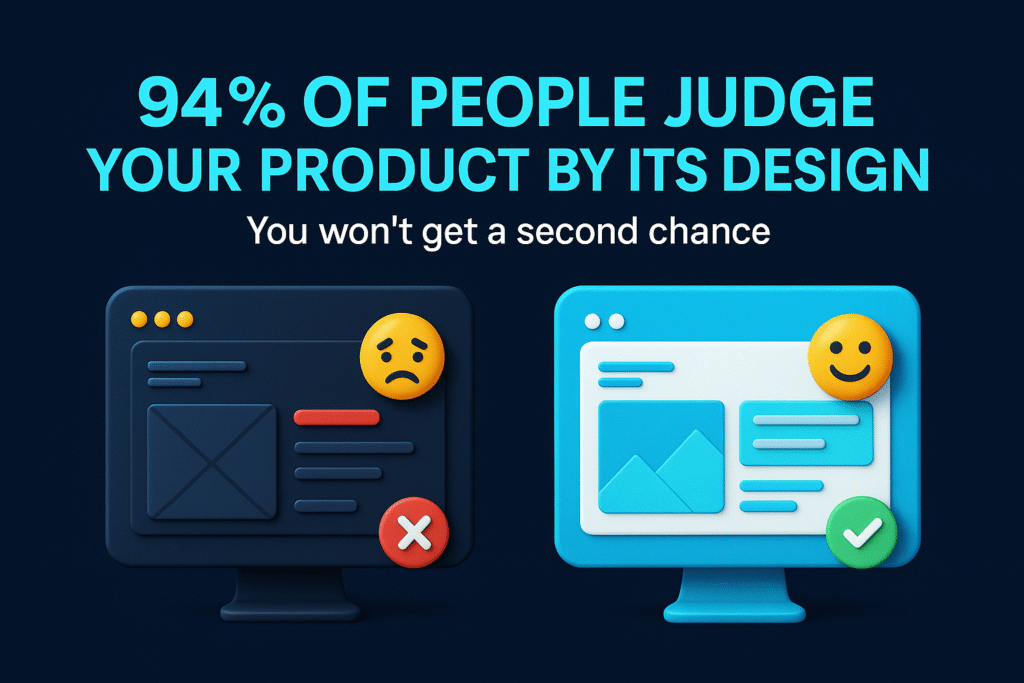
4. Building Trust and Loyalty
It’s guaranteed that customers who feel heard and seen will feel valued. So, when customers see that their feedback is not only heard but also acted upon, they will feel like they’re part of the growth process. This builds trust and creates emotional connections with the brand. Simple actions like replying to reviews and building a requested feature show that a company cares, and this can increase customer long-term loyalty.
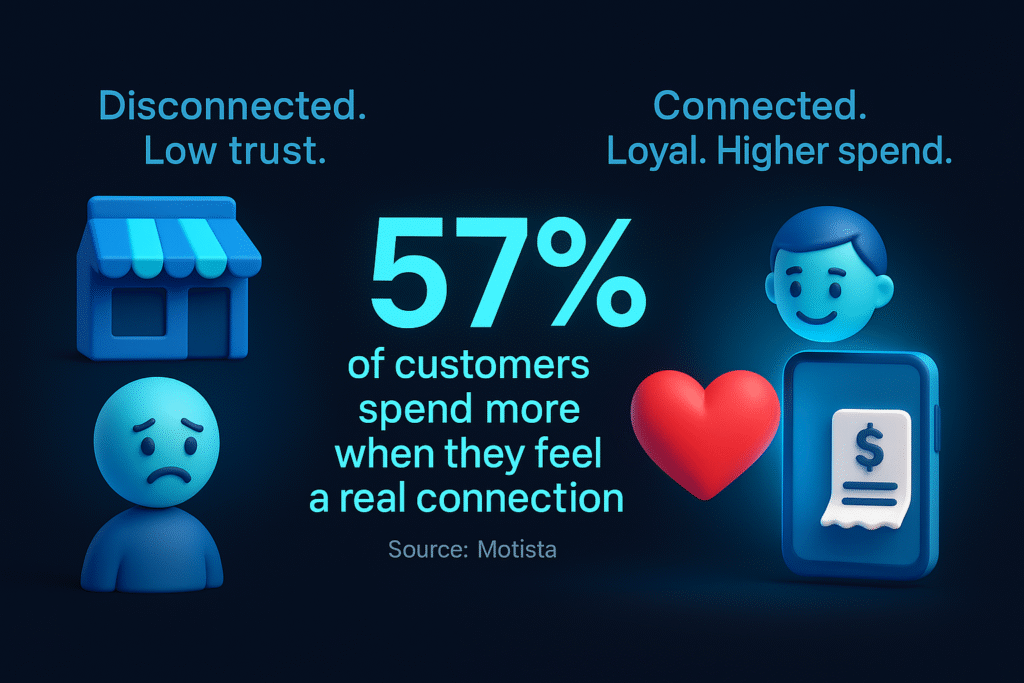
Common Types of Customer Feedback Channels
Understanding the different ways in which customers share their thoughts and insights can help companies plan for suitable actions. So, let’s have a look at the types of feedback.
Feedback Type | Description |
Surveys | This includes questions that are well structured and are used to gather clear insights. |
Online Reviews | These are opinions of the public shared on platforms like Google or app stores. |
Support Tickets | These include any issues or suggestions that are reported directly to customer service. |
Social Media | These are the comments, mentions, and messages shared on platforms like Instagram, Facebook, and X |
In-App Feedback | Instant feedback submitted inside a product or website |
User Interviews | One-on-one conversations for deep insights |
How to use customer feedback effectively
To build an effective product, it’s never enough to just gather feedback. The real value lies in how you use that feedback. Let’s have a look at how we can do it:
Step | What to do | Why it matters |
Organize | Here you will sort feedback into categories. For example, bugs, UX, and new features. | Organization helps identify patterns and avoid missing important points. |
Prioritize | Focus on the feedback that you think needs urgent care. You do this by looking at the impact and feasibility it has on customer satisfaction. | This ensures that the limited resources go towards the most meaningful changes. |
Act | Implement changes that solve real customer problems. | This builds a better product and shows users you’re listening |
Follow Up | Let users know that their feedback leads to real improvement. | Builds trust, loyalty, and continued engagement. |
Customer feedback across product development stages
Many companies think that feedback is only necessary after the launch. But that is far from the truth; customer feedback is helpful and valuable at every stage of development. Let’s have a look at how it fits into each stage:
1. Validating Your Startup Idea
Before you build anything, talk to real people. Ask them about their problems. Don’t guess: use surveys or short interviews to learn what they struggle with. You’re not selling yet. You’re learning. Try to hear how they describe the issue in their own words.
Ask open questions like “What’s the hardest part of doing X?” or “What do you wish existed to fix this?” Validating your startup idea early helps you avoid building something nobody wants. You’ll save time and launch something people need.
2. Getting Feedback on Your Prototype
Once you have your idea, it’s time to show something simple. A sketch, a clickable prototype, or a mockup works fine. Share it with early users and ask how it feels. Watch where they pause or get confused. Let them explore without explaining too much.
You can try using tools like Figma or Canva to build quick designs. Then ask questions like, “What would you click next?” If you try getting some early feedback on your prototype, it can help to fix problems before development begins. That can save money and keep users happy from day one.
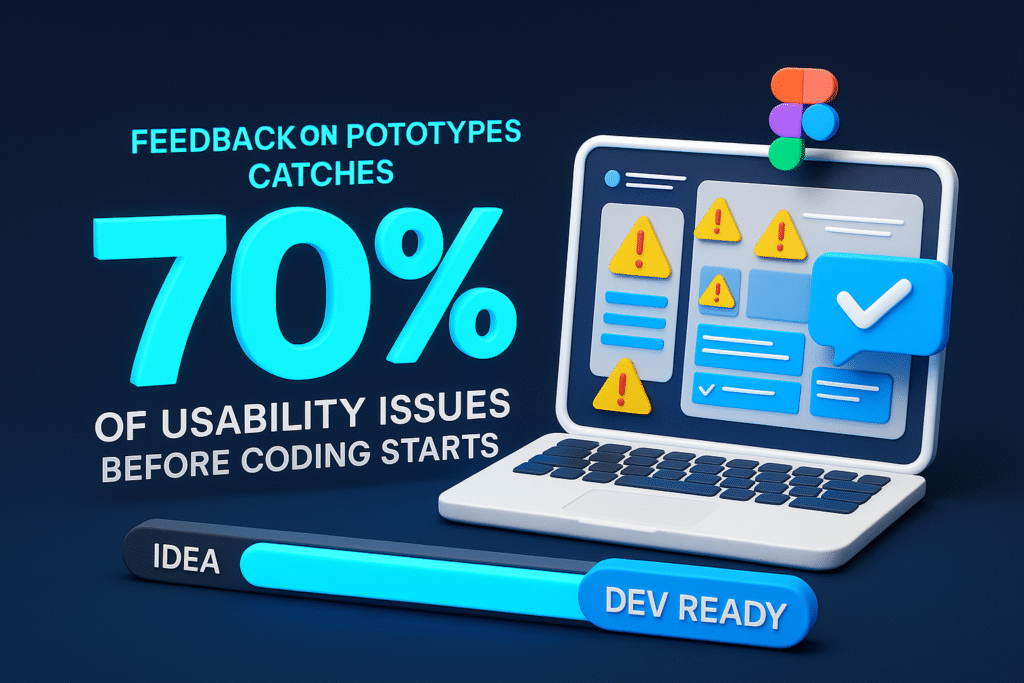
3. Running a Beta Test
Before launching to everyone, run a beta test with a small group. These users should try the real thing. Ask them to use the product naturally and report any issues. Look for bugs, confusing parts, or missing features. Use their feedback to adjust before you go live.
Demo testing will help you catch problems early. That way, your launch runs smoother and users trust your product more. For that, you can employ tools like Google Forms or Typeform to collect structured feedback. Offer something in return, like early access or a small gift.
4. Collecting Feedback After Launch
Once your product is live, the feedback doesn’t stop. Keep listening. Look at what users say in support chats, social media, and reviews. Track what features they like and what they complain about. This helps guide your future updates and improvements.
You can try making a simple “Give Feedback” button in your app or site. Let users send ideas anytime. Thank them. Show what you’ve changed. The reason you need it is that regular feedback will keep your product useful and trusted. People only stick with products that grow with them.
Key Benefits of Customer Feedback in Product Development
Listening to your users brings real benefits. It helps you understand what people truly need, not just what you think they want. This lowers the risk of failure and makes sure you’re solving real problems. When people feel heard, they trust your brand more, and that leads to loyalty.
Happy users are more likely to return, buy again, and tell others. Plus, their feedback often sparks fresh ideas you may have missed. Over time, this input helps your product grow stronger, stay relevant, and stay one step ahead of the competition.
Here’s a quick recap of the biggest benefits:
Helps you understand real customer needs
Reduces the risk of product failure
Improves satisfaction and builds loyalty
Encourages word-of-mouth and repeat purchases
Brings fresh ideas and drives innovation
Builds long-term trust with your audience
Keeps your product competitive and relevant
The takeaway? Feedback is more than advice; it’s fuel for your growth. Listen early, often, and always.
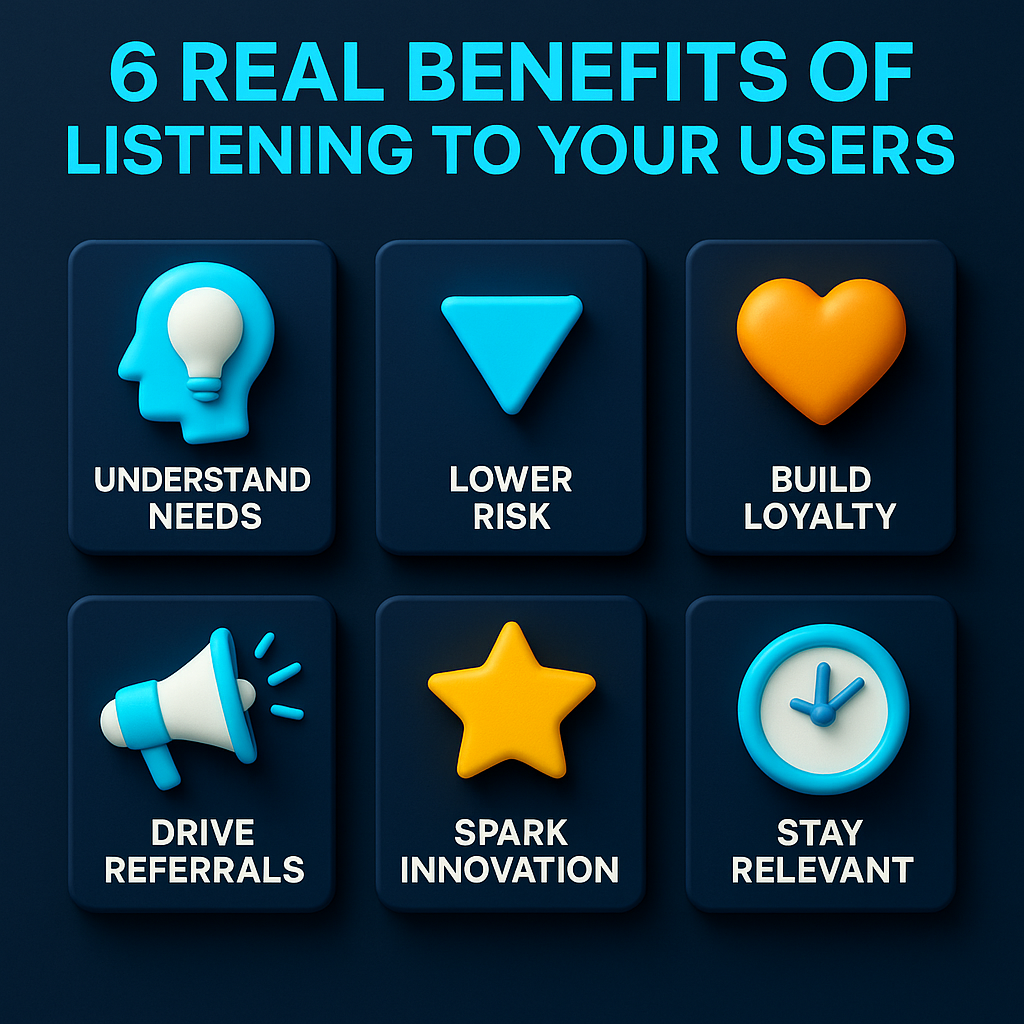
Challenges of customer feedback
Customer feedback is a powerful tool. It helps you improve your product and understand what users need. But sometimes, it can feel like too much. You might get flooded with comments, suggestions, and complaints all at once. Some of it helps. Some of it doesn’t.
However, not all feedback is useful. Some requests aren’t realistic. Some users want opposite things. And when people are unhappy, their voices are often louder than those who are pleased. That can make it hard to know what to fix first, or even make you feel discouraged.
Also, you can’t please everyone. Trying to make every single person happy might hurt your product more than help it.
So, what can you do?
Build a smart system. One that filters, sorts, and ranks the feedback you get. Focus on patterns, not one-off opinions. Track what shows up again and again. Prioritize feedback that solves big problems, not just loud ones.
The key idea: You don’t need to fix everything – just the right things.
Final thoughts
Talk to your users because they will literally give you a cheat guide on what works and what doesn’t. So, stop guessing and start listening, and you’ll be able to build something that is everlasting.
Meet the Author

Teerisra Donlunwad
She is our talented content marketing specialist from Thailand. Currently in her senior year studying marketing, she supports projects like the aboveA Academy and weekly TikTok content. Her creativity and dedication shine through each video, making her a key team member driving fresh, engaging content every week.

